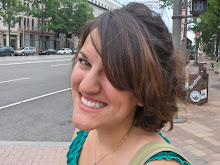Tuesday, Pedro, LeeRoy, Edwin, and I traveled to Spanish Lookout to deliver the third place prize of the “Poster Contest” to a boy from their school. We took Scarlet with us and held a brief ceremony where we recognized the boy’s efforts and his accomplishment. He was thrilled to receive such a huge gift. He received a backpack and all the school supplies he would need for the upcoming year. After wards we thought it appropriate to treat ourselves to an ice cream.


On Wednesday, I arrived at the office only to be informed that I would be participating in a workshop for the next three days. Rafael, Derric and I headed to Cahal Pech to meet with others on creating a program plan for the management of the Chiquibul Cave System. There were people from all backgrounds attending the workshop. There were members of the Archeological Institute, Texas Caving Society, Belizean lumber companies, FCD, and others. Our Facilitators were members of the Nature Conservancy and will be teaching us about using CAP (Conservation Action Planning). The first day was very productive, we identified target areas we wish to preserve and conserve in biological, cultural, and geological aspects. We also identified the vision for the program.
Thursday was the second day of the workshop. We identified target attributes of each of our main target areas, how to measure them and how we will rate them now and in the future. We then discussed the importance of each for quite some time. In the afternoon, a majority of the group went on a field trip to the Cahal Pech ruins, but Rafael and I headed back to the office.
Friday we headed directly over to Cahal Pech in the morning to resume our workshop. We identified major threats that the Chiquibul Cave System will be facing on the cultural, geological, and biological fronts. We were then asked to rate each of the threats as low, medium, high, or very high. A majority of the cultural and geological threats were rated very high because of the fact that many of the items, such as pottery and cave formations, are irreplaceable. On the biological side of things the threats were termed as moderate or medium because most of them can be reversed. At the end of the day we listed all of our findings and agreed to reconvene within the next three months to discuss strategy for dealing with these threats. After the workshop Rafael and I finalized our plans for next week when Dr. Seevers will be visiting.

Nice job! Looks like you are having fun, and hopefully, you are learning something!
ReplyDelete